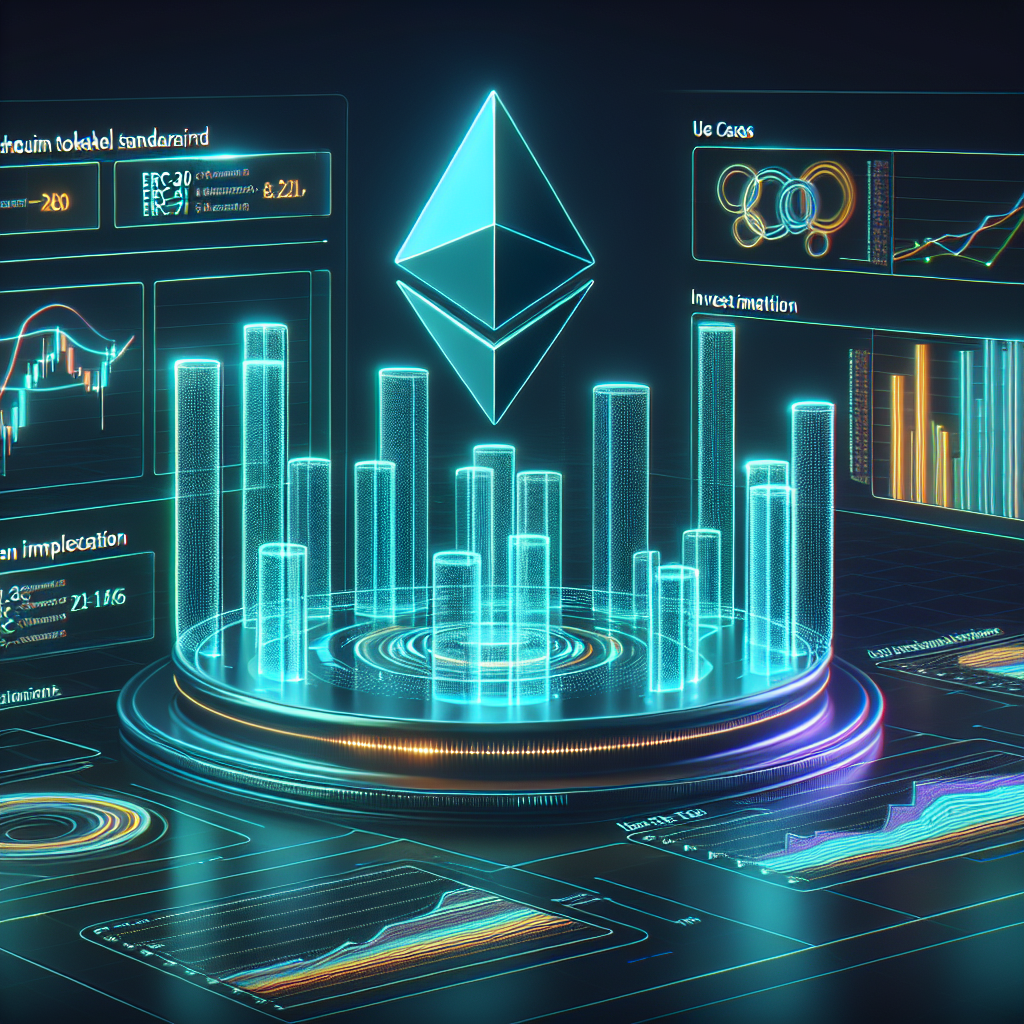Ethereum Token Standards Explained: ERC-20, ERC-721, ERC-1155, and ERC-4626 Use Cases and Investment Implications

Introduction
Ethereum’s smart-contract flexibility has spawned a rich ecosystem of digital assets, from fungible utility tokens to one-of-a-kind collectibles and automated yield vaults. Underpinning this diversity are formalized token standards that outline how assets are created, transferred, and integrated with wallets, exchanges, and decentralized applications (dApps). Understanding these standards—ERC-20, ERC-721, ERC-1155, and the newer ERC-4626—is essential for anyone researching blockchain technology, building products on Ethereum, or making informed crypto-investment decisions.
What Are Ethereum Token Standards?
Token standards are open technical specifications, proposed through Ethereum Improvement Proposals (EIPs), that define required functions and events for smart contracts. By following the same blueprint, disparate projects gain instant interoperability: wallets can display balances, exchanges can list tokens, and dApps can interact with assets they have never “seen” before. Standards also reduce development time and security risks because audited reference implementations are widely available.
ERC-20: The Fungible Token Workhorse
Created in 2015, ERC-20 is Ethereum’s first and most adopted token standard. ERC-20 tokens are fungible: each unit is identical and divisible, like traditional currency. Developers implement functions such as totalSupply, balanceOf, and transfer, which let users hold, send, or approve tokens for spending by smart contracts. Popular ERC-20 projects include stablecoins (USDC, DAI), governance tokens (UNI, AAVE), and Layer-2 gas tokens (OP).
Use Cases
Common ERC-20 use cases include payments, remittances, in-game currencies, governance voting, and DeFi collateral. Because ERC-20 is recognized by virtually every wallet and exchange in the Ethereum ecosystem, launching an ERC-20 token provides immediate market access and liquidity opportunities.
Investment Implications
Investors appreciate ERC-20 assets for their liquidity, clear supply metrics, and composability in DeFi protocols. However, fungibility means low differentiation; token value often depends on project fundamentals and network effects rather than inherent scarcity. Risk factors include smart-contract vulnerabilities, inflationary supply schedules, and regulatory scrutiny, especially for tokens that may be deemed securities.
ERC-721: Birth of Non-Fungible Tokens (NFTs)
Adopted in 2018, ERC-721 introduced non-fungible tokens: unique, indivisible digital items with distinct identifiers. Each token’s metadata can point to art, game assets, event tickets, or real-world deeds stored on-chain or via IPFS. CryptoKitties famously clogged Ethereum in 2017, showcasing NFTs’ viral potential. Today, ERC-721 underlies collections like Bored Ape Yacht Club, trending music NFTs, and real estate tokenization pilots.
Use Cases
Beyond digital art, ERC-721 enables verifiable ownership of gaming skins, luxury goods, academic credentials, and supply-chain certificates. Brands use NFTs for loyalty programs and experiential marketing, while decentralized identity (DID) projects explore NFTs as portable passports.
Investment Implications
NFTs derive value from rarity, cultural relevance, and community engagement rather than cash flows. Liquidity is thinner and pricing more volatile than fungible tokens. Investors should evaluate creator reputation, intellectual-property rights, and on-chain provenance. Fractionalization tools can improve liquidity but introduce additional smart-contract risk.
ERC-1155: Multi-Token Efficiency
Proposed by Enjin in 2018, ERC-1155 is a hybrid standard that supports both fungible and non-fungible tokens in a single smart contract. Instead of deploying a new contract for every asset class, developers can create collections of NFTs and fungible “stackable” items with shared logic, drastically reducing gas costs.
Use Cases
Gaming studios leverage ERC-1155 for in-game economies where dozens of item types coexist—think swords (non-fungible) and gold coins (fungible). DeFi protocols use it for batch issuance of derivative positions, and carbon-credit platforms mint certificates and fractional offsets side by side.
Investment Implications
For investors, ERC-1155 projects benefit from operational efficiency and environmental friendliness due to lower gas consumption. Marketplace support is growing, but not yet as universal as ERC-20 or ERC-721. Assess community adoption and cross-platform compatibility before allocating capital.
ERC-4626: The Tokenized Vault Standard
Ratified in 2022, ERC-4626 standardizes yield-bearing vaults. These contracts accept an underlying ERC-20 asset (e.g., USDC), deploy it into strategies such as lending or liquidity provision, and issue receipt tokens representing a pro-rata claim on the vault. Functions like deposit, withdraw, and convertToShares make vaults interoperable across DeFi.
Use Cases
Protocols like Yearn, Balancer, and Rari Fuse are integrating ERC-4626 to simplify strategy modules. Wallets can display aggregated APYs, and portfolio trackers can calculate net asset value (NAV) consistently. Institutional asset managers can tokenise fund shares on-chain, bringing traditional finance (TradFi) closer to DeFi.
Investment Implications
ERC-4626 vault tokens provide automated yield, transparent accounting, and potential tax efficiency due to tokenized re-investment. Investors must still analyze underlying strategy risk, smart-contract audits, and market liquidity. Because vault share price appreciates relative to the deposit asset, price charts may look flat; understanding the share/asset conversion ratio is critical.
Comparing Token Standards
ERC-20 excels at simplicity and ubiquity, making it the default for fungible utilities. ERC-721 offers indivisible ownership ideal for digital collectibles. ERC-1155 delivers batch operations and mixed-asset flexibility that lower gas fees. ERC-4626 abstracts yield-bearing logic, enhancing DeFi composability. Choosing a standard depends on desired asset properties, user experience, and scalability requirements.
How to Evaluate Tokens Built on These Standards
Regardless of standard, prudent due diligence involves reading smart-contract audits, assessing team credibility, and analyzing token economics. For ERC-20 and ERC-4626, pay attention to supply schedules, revenue flows, and vault strategy. For ERC-721 and ERC-1155 NFTs, verify metadata authenticity, IP rights, and community strength. Finally, consider market depth on decentralized exchanges (DEXs) and liquidity pools, because ease of exit influences risk.
Conclusion
Ethereum token standards serve as the DNA of the blockchain economy, dictating how assets behave and interconnect. ERC-20 unlocked the programmable money revolution, ERC-721 spurred the NFT boom, ERC-1155 optimized multi-asset ecosystems, and ERC-4626 is streamlining on-chain yield. Each offers distinct investment profiles, opportunities, and risks. By grasping their technical nuances and real-world use cases, developers can build better products and investors can allocate capital with greater confidence in the fast-evolving Web3 landscape.